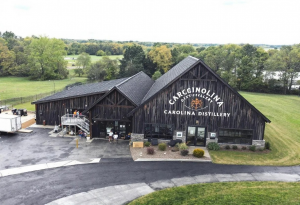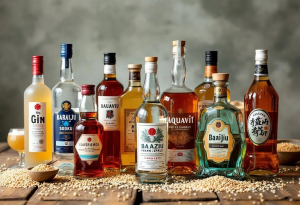Being a Kentucky native, born and raised smack-dab in Bardstown – bourbon country – I’ve always been around distilleries. Seriously, the sights, sounds, and smells are in my blood.
From a chemical engineering degree at the University of Kentucky to stints at Maker’s Mark and a craft distillery in Lexington, I’ve learned a thing or two. And that’s given me a unique perspective on capturing the spirit – pun intended! – of this age-old craft through photography.
It’s not just snapping pictures, you know? It’s about telling a story. Conveying the passion. Revealing the hidden artistry within each distillery.
Know Your Booze: It’s More Than Just a Drink
Before you even think about grabbing your camera, get to know your subject. Distilling is a blend of science and art. Think about it:
- Gleaming copper stills
- Intricate pipework
- Weathered wooden barrels
Each element tells a story. Do your homework. Research the distillery’s history. Understand their unique processes. Get to know the people behind the spirit. All this info will inform your photos and make them real.
What story are you trying to tell? Meticulous craftsmanship? Heritage and tradition? The innovative spirit of a modern distillery? Nail down your narrative. Let that guide your composition, lighting, and overall approach.
Gear Up! What You Really Need
You don’t need a ton of fancy gear to take killer distillery photos. But a few key pieces will make a huge difference.
Camera
A DSLR or mirrorless camera with interchangeable lenses gives you the most flexibility. Full-frame sensors are amazing in low light – a common distillery situation.
Lenses: Your Glass Arsenal
- Wide-angle (16-35mm): Capture the grand scale of the distillery.
- Standard zoom (24-70mm): A workhorse for portraits and still life.
- Prime (50mm or 35mm): Low light master. Creates that beautiful shallow depth of field.
Tripod: Your Best Friend in Low Light
Seriously, don’t skip this. Essential for sharp images when light is scarce. Also great for long exposures that blur motion – adding a cool sense of dynamism.
Flash (Optional): Use With Caution!
If you must use flash, diffuse it! Bounce it off walls or ceilings. Avoid harsh shadows and keep that natural vibe. LED panels are great for continuous, adjustable lighting too.
Polarizing Filter: Tame the Glare
Cuts down glare on those shiny surfaces like stainless steel and glass. Trust me, you’ll want this.
Bottom line? The best camera is the one you have with you. Even a smartphone can capture stunning images with the right technique and lighting.

Light is King: Mastering the Mood
Light is everything in photography. Especially in distilleries, which, let’s face it, are often dimly lit. So, how do you make the most of it?
Natural Light: Golden Hour Magic
If you can, shoot during the “golden hour” – that sweet spot right after sunrise and before sunset. The light is soft, warm, and makes everything look better. Use windows and doorways to create dramatic light shafts.
Available Light: Embrace the Ambience
Distilleries often have unique ambient lighting. Use it! Adjust your ISO and aperture to capture the mood.
Artificial Light: Tread Lightly
Again, bounce that flash! Soft, natural look is the goal. LED panels offer continuous, adjustable lighting – a good alternative.
Long Exposures: Get Creative With Motion
A tripod lets you use slow shutter speeds, blurring motion and capturing more light. Perfect for showing the flow of liquid or the steam rising from a still.
Pay attention to the direction and quality of light. Backlighting creates silhouettes and highlights textures. Side lighting reveals details and adds depth.
Composition and Storytelling: Crafting Your Vision
Composition is how you arrange elements within the frame. It’s what makes an image visually appealing and engaging. Here are some tricks:
- Rule of thirds: Divide the frame into nine equal parts. Place key elements along the lines or at the intersections. Boom!
- Leading lines: Use lines (pipes, barrels, walkways) to guide the viewer’s eye.
- Symmetry and patterns: Look for repeating patterns to create order and balance.
- Framing: Use doorways or arches to frame your subject. Draws the eye right where you want it.
- Depth of field: Shallow depth of field isolates your subject. Deep depth of field gets everything in focus.
But it’s not just about pretty pictures. Think about the story you want to tell. Show the human side – the distillers’ hands, their faces, how they interact with the equipment. Capture the raw materials – the grains, the water, the yeast. Get the details – the gauges, the valves, the handwritten labels. These details add authenticity and depth.
Still Life: Bottling the Essence
Still life photography is perfect for showcasing the final product – the spirit itself.
- Background: Keep it simple! Uncluttered. Natural materials like wood or stone work great.
- Lighting: Soft, diffused light to highlight the bottle’s shape and color. Backlighting can create a cool halo effect.
- Props: Use props that tell the spirit’s story. Ingredients, glassware, vintage tools – get creative!
- Details: Capture the texture of the glass, the color of the liquid, and the details of the label.
Experiment with different angles and compositions. Shoot from above, below, or the side. A macro lens is awesome for extreme close-ups.
Post-Processing: Enhance, Don’t Fake It
Post-processing is key, but use it wisely. The goal is to enhance, not completely change the image. Think of it as polishing a gem.
- Exposure and contrast: Adjust brightness and contrast.
- White balance: Correct any weird color casts.
- Highlights and shadows: Recover lost detail.
- Clarity and sharpness: Enhance those details!
- Color correction: Adjust saturation and hue.
Refine your images. Bring out their best qualities. But don’t overdo it! Keep it authentic. Keep it true to the spirit of the distillery.
Ethics: Respect and Responsibility First
Always be respectful. Ask for permission before taking photos. Be mindful of your surroundings. Don’t disrupt the distilling process or get in the way of the distillers.
And be responsible in how you portray alcohol. Don’t glorify excessive drinking or promote irresponsible behavior. Focus on the craft, the history, and the culture.
Final Thoughts: Capturing the Soul
Spirit photography is about capturing the soul of the spirit. Telling a story. Conveying the passion. Revealing the hidden artistry within each distillery.
Understand your subject. Master the light. Craft compelling compositions. Create images that resonate with authenticity and capture the essence of this age-old craft.
So, grab your camera, explore those local distilleries, and start capturing the magic. Cheers!


